 To enhance service speed and avoid tariff delays, we've opened a US warehouse. All US orders ship directly from our US facility.
To enhance service speed and avoid tariff delays, we've opened a US warehouse. All US orders ship directly from our US facility.
| Cat. No. | Product Name | Field of Application | Chemical Structure |
|---|---|---|---|
| DC49908 | OF-02 Featured |
OF-02 (OF-2) is an alkenyl amino alcohol (AAA) ionizable lipid for highly potent in vivo mRNA delivery.Alkenyl amino alcohols (AAA) are a functional group found in sphingosine and other bioactive molecules. It was used to prepare
AAA-based ionizable lipids through ring-opening reactions between alkenyl epoxides (AEs) and polyamine cores. These
AAA-based iLNPs could promote high-level protein expression Therefore, AAA-based ionizable lipids OF-00, OF-01,
OF-02, and OF-03 were prepared. The results of in vivo delivery
of human erythropoietin (hEPO) mRNA showed that the AAA
ionizable lipid OF-02 with the linoleic acid derivative
could effectively deliver hEPO mRNA. Compared with the positive
control CKK-E12, OF-02 showed an increased ability to
induce serum EPO protein expression by nearly twofold
(Figure 7b). Likewise, it outperformed two benchmark ionizable
lipids (503013 and C12-200) in the nucleic acid delivery field.
Furthermore, the mRNA delivered by OF-02 iLNPs was mainly
in vivo.translated into the liver. The liver-targeting ability of OF-02 iLNPs
improves their delivery efficiency. Therefore, the OF-02 iLNPs
may become excellent delivery vehicles for the treatment of liver
diseases without other side effects of damage to other organs
during the treatment
More description
|

|
| DC60475 | CL4F8-6 Featured |
CL4F8-6 is an ionizable cationic lipid (pKa = 6.14) that has been used in combination with other lipids in the formation of lipid nanoparticles (LNPs).1 LNPs containing CL4F8-6 and encapsulating an mRNA reporter accumulate specifically in the mouse liver after intravenous administration. LNPs containing CL4F8-6 and encapsulating mRNA encoding the Cas9 nuclease (mCas9) and single-guide RNA (sgRNA) targeting Ttr (sgTtr), the gene encoding transthyretin, have been used to induce CRISPR-mediated gene knockdown in mice resulting in a reduction of serum levels of TTR.
More description
|
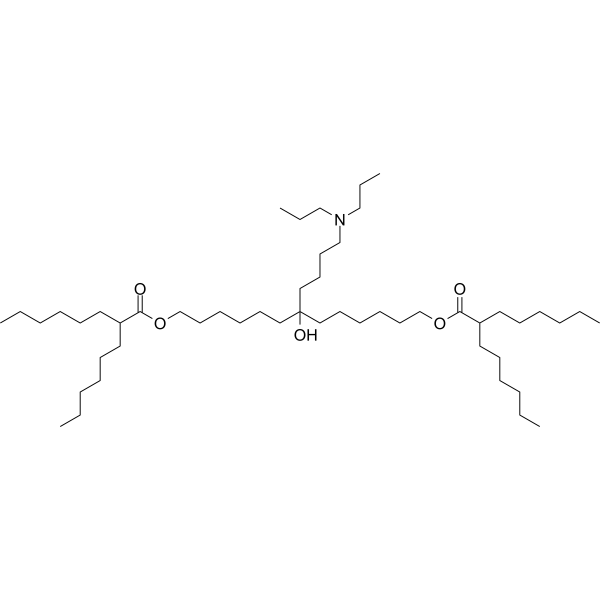
|
| DC65328 | AA-T3A-C12 Featured |
AA-T3A-C12 is a leading anisamide-tethered lipidoid (AA-lipidoid) identified through a combinatorial library screening for targeted RNA delivery to activated fibroblasts, offering a promising approach to treat liver fibrosis.AA-T3A-C12 is a leading anisamide-tethered lipidoid (AA-lipidoid) identified through a combinatorial library screening for targeted RNA delivery to activated fibroblasts, offering a promising approach to treat liver fibrosis. It is synthesized via a one-pot, two-step modular method that combines anisamide—a ligand for sigma receptors overexpressed on activated hepatic stellate cells (HSCs)—with a T3A polyamine core and C12 epoxide tails, enabling efficient siRNA encapsulation in lipid nanoparticles (LNPs).
In vitro, AA-T3A-C12 LNPs exhibit enhanced cellular uptake and gene silencing in activated fibroblasts, dependent on sigma receptor binding, as confirmed by haloperidol blockade studies, and outperform non-targeted analogs and the FDA-approved MC3 LNPs in fibroblast selectivity.In a mouse model of CCl4-induced liver fibrosis, AA-T3A-C12/siHSP47 LNP achieves approximately 65% knockdown of heat shock protein 47 (HSP47), a key fibrotic target, leading to significant reduction in collagen deposition and fibrosis alleviation, with a good safety profile and no exacerbation of liver injury.
More description
|
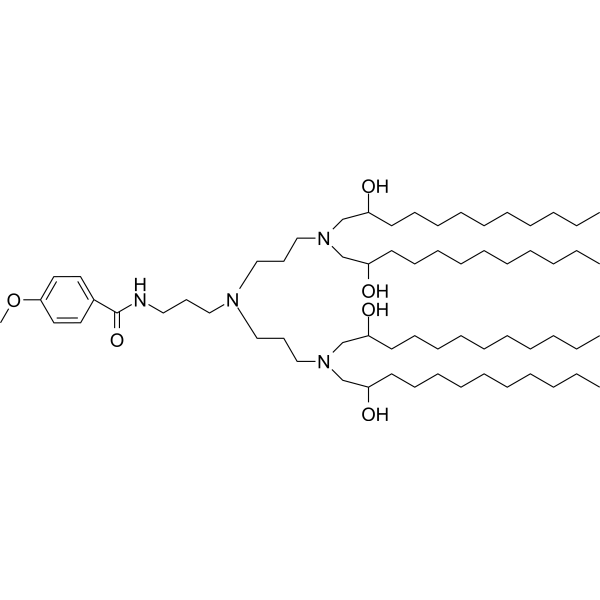
|
| DC49932 | FTT5 Featured |
FTT5 is a lipid-like compound for efficient delivery of long mRNAs in vivo.
More description
|

|
| DC67449 | Lipid TG4C Featured |
TG4C is an ionizable cationic lipid (pKa 6.71) optimized for mRNA delivery via lipid nanoparticles (LNPs). When formulated into LNPs carrying human EPO mRNA, it significantly elevates serum EPO levels in mice. Furthermore, aerosolized TG4C-based LNPs containing HGF mRNA demonstrate therapeutic potential in pulmonary emphysema models, showing reduced inflammatory cytokines (IL-1β, IL-6, TNF-α) in bronchoalveolar lavage fluid after elastase-induced lung injury.
More description
|

|
| DC77017 | 9(10)-Nitrooleate Featured |
9(10)-Nitrooleate(NOA)is an endogenous nitrated fatty acid that functions as a highly efficient bioactive molecule. Its primary role is the specific inhibition of the STING protein, a key inflammatory signaling sensor within cells. When STING is aberrantly activated, it can trigger a severe inflammatory response, leading to cellular damage.Mechanistically, NOA acts as an electrophile, capable of covalently modifying specific cysteine residues on the STING protein, thereby effectively blocking its ability to activate downstream signaling pathways. This inhibitory action establishes NOA as a potent endogenous anti-inflammatory agent.
In practical application, loading NOA into delivery systems, such as lipid nanoparticles, equips them with an intrinsic "molecular fire extinguisher." It significantly mitigates the acute inflammatory response triggered by delivered cargo, effectively transforming otherwise toxic delivery vehicles into safe platforms. The core value of NOA lies in its ability to provide exceptional safety without compromising the functional expression of therapeutic payloads, offering a crucial safeguard for achieving long-term treatments.
More description
|
-Nitrooleate.gif)
|
| DC12145 | DLinDMA Featured |
DLin-DMA is an ionizable amino lipid with cationic properties and a pKa of 6.7. It is widely utilized in lipid nanoparticle (LNP) formulations alongside helper lipids to enable efficient nucleic acid delivery.
More description
|

|
| DC66649 | CP-LC-1254 Featured |

|
|
| DC67721 | Macrocyclic Lipid 5 Featured |
Lipid 5 is an ionizable lipid based on a macrocyclic cyclam headgroup. Its structure incorporates a benzylmethyl carbonate (BMC) linker, which contains an aromatic benzene ring, and a saturated C18 hydrophobic tail. Lipid 5 was mixed with helper lipids at a fixed molar ratio and formulated into mRNA-loaded lipid nanoparticles (LNPs) using microfluidic technology. Characterization data show that these LNPs have a hydrodynamic diameter of approximately 50-80 nanometers and a polydispersity index (PDI) below 0.2, indicating a small particle size with a uniform distribution. Their zeta potential at physiological pH is near neutral (ranging from -3 to +3 mV). The mRNA encapsulation efficiency, as determined by the Ribogreen assay, exceeds 95%. Cryo-transmission electron microscopy images reveal that the LNPs exhibit a typical spherical bilayer structure. In in vitro experiments, Lipid 5 LNPs mediated a higher level of luciferase protein expression in HEK293FT cells compared to the benchmark lipid DLin-MC3-DMA. In Balb/c mice, intravenous injection of LNPs encapsulating luciferase mRNA resulted in in vivo imaging signals predominantly concentrated in the lungs. Quantitative analysis indicated that the signal intensity in the lungs was over 100 times greater than that in the liver, with more than 95% of the total signal distributed in the lungs. In Ai9 reporter gene mice, two intravenous injections of Lipid 5 LNPs encapsulating Cre mRNA led to quantitative analysis of lung tissue sections showing that approximately 30% of lung cells were positive for tdTomato signal.
More description
|
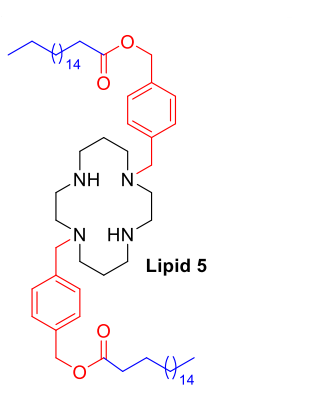
|
| DC67720 | Pomalidomide-C7-NH2 hydrochloride Featured |
Pomalidomide-C7-NH2 (Pomalidomide 4'-alkylC7-amine) hydrochloride is an E3 ligase ligand-linker conjugate. Pomalidomide-C7-NH2 hydrochloride can be used for the synthesis of PROTAC.
More description
|

|
| DC67719 | (S,R,S)-CO-C2-acid Featured |
(S,R,S)-CO-C2-acid (VH 032 amide-alkylC2-acid) is a functionalized von-Hippel-Lindau (VHL) protein ligand that can be used in PROTAC research and development. (S,R,S)-CO-C2-acid contains an E3 ligand alkyl ligand for conjugation of target protein ligands.
More description
|
-CO-C2-acid.gif)
|
| DC67718 | E3 ligase Ligand 32 Featured |
E3 ligase Ligand 32 (First product in Example 52) is a ligand for E3 ubiquitin ligase. E3 ligase Ligand 32 can be connected to the ligand for protein by a linker to form PROTACs and can be used for the synthesis of PROTAC SMARCA2/4-degrader-29 (HY-162743).
More description
|

|
| DC46687 | Pomalidomide-PEG2-COOH Featured |
Pomalidomide-PEG2-COOH is a synthesized E3 ligase ligand-linker conjugate that incorporates the Pomalidomide based cereblon ligand and 2-unit PEG linker used in PROTAC technology.
More description
|

|
| DC67717 | 1H-Indazole-4-carboxamide, 6-bromo-N-[(1,2-dihydro-4,6-dimethyl-2-oxo-3-pyridinyl)methyl]-1-(1-methylethyl)- Featured |
methyl]-1-(1-methylethyl)-.gif)
|
|
| DC70723 | QC-01–175 Featured |
QC-01-175 is a hetero-bifunctional molecule designed to engage both tau and Cereblon (CRBN) to trigger tau ubiquitination and proteasomal degradation (tau PROTAC).QC-01–175 effected clearance of tau in frontotemporal dementia (FTD) patient-derived neuronal cell models, with minimal effect on tau from neurons of healthy controls.QC-01–175 also rescued stress vulnerability in FTD neurons, phenocopying CRISPR-mediated MAPT-knockout.
More description
|

|
| DC67716 | (S,R,S)-AHPC-PEG2-C4-Cl Featured |
(S,R,S)-AHPC-PEG2-C4-Cl (VH032-PEG2-C4-Cl) is a conjugate of ligands for E3 and 13-atom-length linker. The connector of linker is Halogen group. (S,R,S)-AHPC-PEG2-C4-Cl incorporates the (S,R,S)-AHPC based VHL ligand and an alkyl/ether-based linker. (S,R,S)-AHPC-PEG2-C4-Cl is capable of inducing the degradation of GFP-HaloTag7 in cell-based assays.
More description
|
-AHPC-PEG2-C4-Cl.gif)
|
| DC67715 | E3 ligase Ligand 9 Featured |
E3 ligase Ligand 9 is a ligand for E3 ubiquitin ligase. E3 ligase Ligand 9 can be connected to the ligand for protein by a linker to form PROTACs or SNIPERs. PROTACs are inducers of ubiquitination-mediated degradation of cancer-promoting proteins.
More description
|
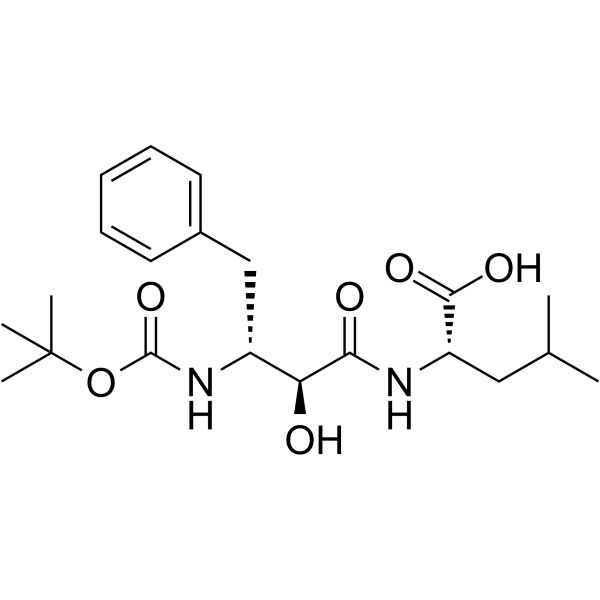
|
| DC12676 | VL-285 Featured |
VL285 is a potent VHL ligand, degrading HaloTag7 fusion proteins.
More description
|

|
| DC67714 | WAY-620124 Featured |
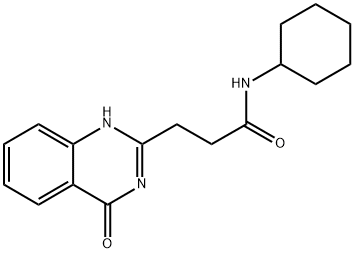
|
|
| DC67713 | VH 032 amide-alkylC6-acid Featured |
VH 032 amide-alkylC6-acid ((S,R,S)-AHPC-CO-C6-COOH) is a VH032 analog that acts as a ligand for VHL, recruiting von Hippel-Lindau (VHL) protein. VH 032 amide-alkylC6-acid can be used in the synthesis of PROTACs.
More description
|

|
| DC45747 | Thalidomide-amido-PEG2-NH2 hydrochloride Featured |
Thalidomide-amido-PEG2-NH2 hydrochloride is a synthesized E3 ligase ligand-linker conjugate that incorporates the Thalidomide based cereblon ligand and a linker used in PROTAC technology.
More description
|

|
| DC45752 | (S,R,S)-AHPC-C1-NH2 hydrochloride Featured |
(S,R,S)-AHPC-C1-NH2 hydrochloride is a synthesized E3 ligase ligand-linker conjugate that incorporates the (S,R,S)-AHPC based VHL ligand and a linker used in PROTAC technology.
More description
|
-AHPC-C1-NH2 hydrochloride.gif)
|
| DC67712 | 2-(2,6-dioxopiperidin-3-yl)-5-ethynyl-2,3-dihydro-1H-isoindole-1,3-dione Featured |
2-(2,6-Dioxopiperidin-3-yl)-5-ethynylisoindoline-1,3-dione is a Thalidomide analog that can be useful in PROTAC research.
More description
|
-5-ethynylisoindoline-1,3-dione.gif)
|
| DC78333 | JNJ-6640 Featured |
JNJ-6640 is an inhibitor targeting mycobacterial PurF (the first enzyme in the de novo purine biosynthesis pathway) with potent anti-tuberculosis activity. JNJ-6640 exhibits bactericidal activity against Mycobacterium tuberculosis in vitro, with an MIC90 of 8.6 nM. JNJ-6640 disrupts de novo purine biosynthesis, inhibits M. tuberculosis DNA replication in vivo. JNJ-6640 exhibits anti-tuberculosis efficacy in acutely infected mice. JNJ-6640 can be used for the study of tuberculosis.
More description
|

|
| DC45723 | Thalidomide-NH-C8-NH2 hydrochloride Featured |
Thalidomide-NH-C8-NH2 hydrochloride is a synthesized E3 ligase ligand-linker conjugate that incorporates the Thalidomide based cereblon ligand and a linker used in PROTAC technology.
More description
|

|
| DC8410 | GNE-317 Featured |
GNE-317 is a potent, brain-penetrant PI3K inhibitor.
More description
|
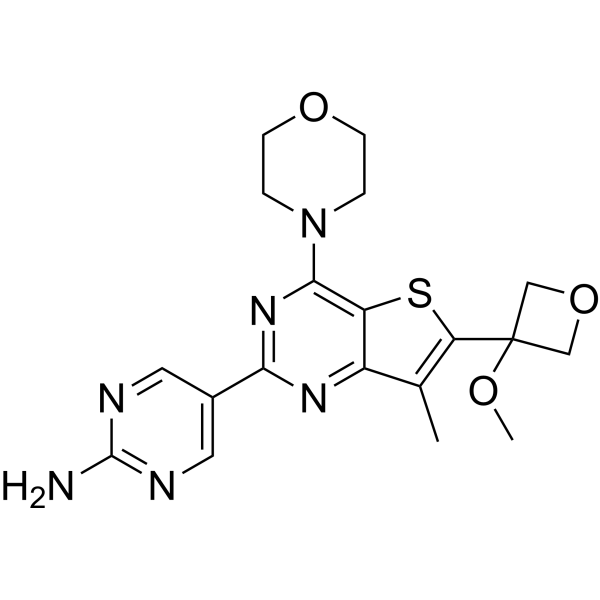
|
| DC50053 | E3 Ligase Ligand-Linker Conjugates 20 Featured |
Thalidomide-O-amido-C8-NH2 (Cereblon Ligand-Linker Conjugates 2), a synthesized E3 ligase ligand-linker conjugate that incorporates the Thalidomide based cereblon ligand and a linker, can be used in the synthesis of PROTACs.
More description
|

|
| DC12675 | E3 ligase Ligand-Linker Conjugates 17 Featured |
E3 ligase Ligand-Linker Conjugates 17 is a synthesized compound that incorporates an E3 ligase ligand and a linker used in PROTAC technology.
More description
|

|
| DC77235 | GDC-2992 Featured |
GDC-2992 (Compound 28A) is an orally active androgen receptor (AR) degrader. GDC-2992 degrads AR with a DC50 value of 2.7 nM and inhibits proliferation with an IC50 valude of 9.7 nM in VCaPcells. GDC-2992 can be used for prostatic cancer study.
More description
|
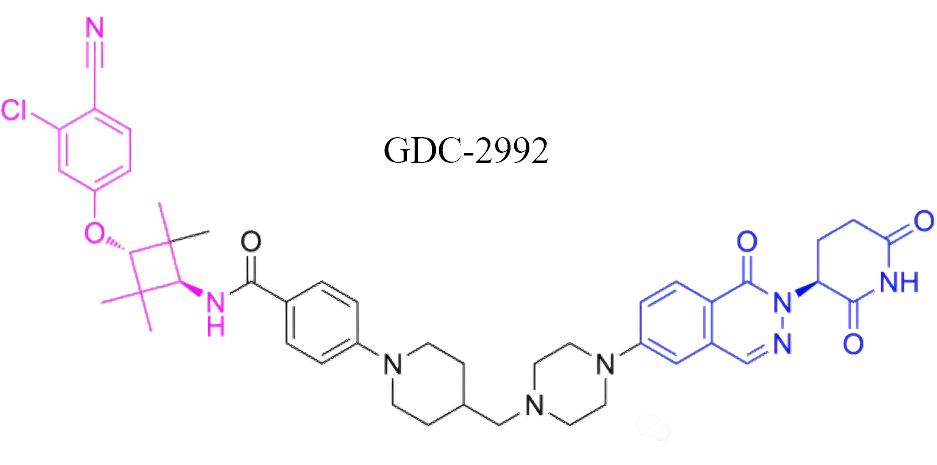
|
| DC48177 | ARB-272572 Featured |
ARB-272572 is a potent small-molecule PD-L1 inhibitor with an IC50 value of 400 pM.
More description
|

|